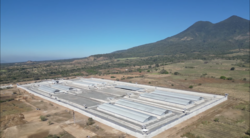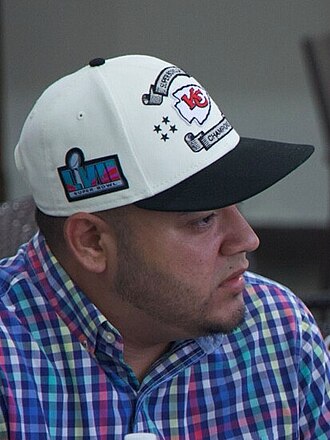How did we get here? How did we ever get here so fast?
These are almost surely questions on the minds of millions of Americans watching the dystopian horror show that includes the ongoing imprisonment of Kilmar Armando Abrego Garcia in a brutal, gang-ridden prison in El Salvador despite a ruling in 2019 by an immigration judge that he not be subject to removal from this country. These are not the only questions that need to be asked, but it is important to review the history of Abrego Garcia’s case as background for the compelling larger questions that lie ahead.
Even as I say that, I am very aware that the “history” of this case changes almost daily, as court fights continue in the face of Trump administration intransigence, and members of Congress bang on the doors of the dictatorial government of El Salvador, which is perfectly happy to receive millions of dollars from the U.S. in exchange for housing prisoners who never received any due process before being flown there to enter CECOT, a brutal, high-security prison that appears to be a one-way ticket to hell.
What is very clear is that Abrego Garcia, at age 16, fled El Salvador while being targeted for recruitment by a violent Salvadoran gang, Barrio 18, that dominated his neighborhood of Los Nogales in the capital, San Salvador. The family had already sent his brother, Cesar, to the U.S. to avoid the same fate. People in such circumstances typically arrive undocumented because they cannot afford to wait; they are seeking to save their own lives. Many apply for asylum when they get here, but Abrego Garcia was not even an adult at the time. I cannot even imagine fending for myself in a foreign country at that age, let alone knowing how to seek asylum through its legal system, but I grew up in a quiet suburb of Cleveland in the 1960s, and no one was trying to force me to join a gang. In any event, Abrego Garcia did not succeed in making an asylum claim within the one year allowed after arrival, a key point in his current situation.
Why did this gang target Abrego Garcia’s family? I am drawing much of my information from a well-researched article by Roger Parloff in Lawfare, a website that features legal research. The article notes that his mother, Cecilia, was running a successful food delivery business making pupusas, and the gang, as such groups are wont to do, wanted to extort the business. The family refused, and harassment ensued, resulting in the two brothers fleeing the country.

CECOT, the maximum security prison in El Salvador where Abrego Garcia was sent by the U.S. government; photo from Wikipedia
It may be worth noting that the Salvadoran government of President Nayib Bukele has violently suppressed gang activity, but at the cost of imprisoning thousands without proper legal proceedings. Public safety, while welcome, has come with great fear of being swept into the dragnet that has filled prisons like CECOT, whose Spanish acronym basically means “terrorism confinement center.” In short, the people of El Salvador have been forced into a Hobson’s choice.
Abrego Garcia has lived in Maryland since his arrival in the U.S. in 2011, working in the construction industry. He later met Jennifer, his wife and a U.S. citizen, who had two children from a prior relationship, and in 2018 they had a child. In 2019, he and three other men were arrested at a Home Depot, where they were seeking work. He had dropped off Jennifer’s two children—she was five months pregnant—at school and a babysitter. The Prince George’s County police questioned him about gang ties, but he insisted he had none and knew nothing. Police turned him over to Immigration and Customs Enforcement (ICE), and Jennifer did not hear from him until the next morning. She secured a lawyer for him because ICE charged him with being in the country illegally.
At his hearing, ICE claimed he was an MS-13 gang member. The judge, who acknowledged the government’s claim, nonetheless found the two documents introduced to be at odds with each other in stating the cause of arrest, with the federal form claiming that it had to do with a murder investigation, while the local Gang Field Investigation Sheet (GFIS) simply stated loitering as the cause. The GFIS stated that Garcia was wearing a Chicago Bulls hoodie and cap. While the gang may have used such apparel, as a Chicagoan, I might note that so do tens of thousands of basketball fans. It hardly constitutes meaningful proof by itself. A confidential informant also identified Abrego Garcia as part of the Westerns clique of MS-13, but that too was a flawed claim since they are in Long Island. He had never lived outside Maryland once he settled in the U.S. Moreover, when his lawyer contacted the police, he found that the detective who authored the GFIS was not available because he had been suspended. In short, they were unable to cross-examine him to counter the government’s claims. This is a crucial point because the Trump administration in recent weeks has been adamantly insisting that Abrego Garcia is a terrorist and gang member based on this deeply flawed evidence.
By October 2019, Immigration Judge David M. Jones, after two days of interviewing Abrego Garcia about his fears of persecution if returned to El Salvador, found that he “provided credible responses to the questions asked. His testimony was internally consistent, externally consistent with his asylum application and other documents, and appeared free of embellishment. Further, he provided substantial documentation buttressing his claims.” On this basis, Jones issued an order forbidding his removal to El Salvador. That ruling still stands, notwithstanding any actions recently by ICE or the administration.
In fact, over the past five years, Abrego Garcia has worked to support his family, has regularly attended his immigration appointments, became a union member and is in an apprentice program as a sheet metal worker, earning a vocational license at the University of Maryland.

Salvadoran justice minister Gustavo Villatoro and U.S. homeland security secretary Kristi Noem observing inmates inside a cell in CECOT, March 2025; photo from Wikipedia
Which leads us to the current dilemma, which began when Abrego Garcia was stopped without a warrant by ICE on March 12 and arrested with his special-needs son in the back seat of the car. ICE called his wife to come and get the child, and he was spirited off to El Salvador in what the administration later called “an administrative error.” That would be bad enough, but they have stubbornly insisted they cannot bring him back while continuing to claim he is a known gang member and terrorist in the face of all evidence to the contrary. The U.S. Supreme Court has ruled 9-0 that the administration must “facilitate” his return to the U.S., but nothing has happened as administration officials persist in a game of “hide the ball,” claiming to be helpless in the face of what might fairly be called a pipsqueak regime in El Salvador that is being paid by the U.S. to imprison deported immigrants. Who is driving this train?
Since then, Sen. Chris Van Hollen (D-MD) has visited Abrego Garcia in El Salvador, where he was curiously relocated from CECOT to a smaller facility after visiting with Van Hollen in a hotel in San Salvador. This visit was followed by a delegation of House Democrats, who continue to push for his release.
So, why is there no movement, and why does the Trump administration continue to defy or evade court orders?
One answer is that Trump, and by extension his acolytes, is almost physically allergic to the idea of admitting that he is wrong. The problem with that stance—and we see this nearly every day of his second term—is that refusing to back down is a path to either crisis or ignominious defeat either in the long term or very much sooner. Already, whole planeloads of other undocumented immigrants have been shipped away without court hearings and in defiance of other court orders. The result for the nation is a divisive atmosphere that does little or nothing to solve real problems.
But another, scarier answer is that Trump really wants to establish a dictatorship in which the only good court ruling is one in his favor, and all others can be ignored. Americans cannot afford to ignore this threat to their personal rights and the Constitution, no matter how unconcerned they may be for now. (The growing demonstrations and contentious town hall meetings for Congress members is evidence that this attitude is wearing thin.) Trump has already said that he might like to ship American criminals to El Salvador and that we cannot “give everyone a trial.” We already know, or should know, what that looks like: the disappearances of dissident citizens under the military junta in Argentina in the 1980s, the knock on the door after midnight in Nazi Germany, the suppression of civil rights in Putin’s Russia.
We can sit back and think this will not happen to us. There is a famous poem about the consequences of such thinking, by Pastor Martin Niemöller in post-WWII Germany. Or we can speak up now and make ourselves heard in rallies, town halls, letters to Congress and letters to the editor, until we budge this rock from its moorings. Which are you willing to do?
Jim Schwab

